Rodin Works: Paolo and Francesca |
||||||
|
Like 'Fugit Amor', this composition is another version of the the love couple Paolo and Francesca, borne through the air by a strong wind in the Second Circle of Hell. The whirlwind that drives them around is like an expression of their unbridled desire and the turmoil of their emotions. In Canto V of Dante's Inferno, they are drawn to Dante and his guide, the Roman poet Virgil, and Francesca tells them their depressing tale. (See: 'The Kiss' and 'Fugit Amor'). The presentatation of the floating love couple, anxiously clutching to each other, had been a common subject in painting since Dante's 'Divina Commedia' grew popular.
In the final version of 'The Gates of Hell', Rodin's unhappy love couple was placed directly underneath the group of 'Ugolino and his sons'. The way Paolo is grasping Francesca with outstretched arms is like a formal echo of the gesture of Ugolino's son, clinging to his father.
If we zoom out from the
individual scene, we can see that on the whole surface of the two panels
of 'The Gates', there is an ongoing modulation of the background, instead
of even planes. Rodin had placed every group on a sort of
three-dimensional canvas, that could represent either element - fire,
water, ice, wind or solid ground - depending on the perspective and the
scene we focus on; through this ongoing wavering swirl of plasma, the
sculptor formally connected all the different characters to the totality
of the door and evocated an impression of restless movement. Leaving the
precise quality of this substance unspecified, the sculptors prevents the
attention of the spectator to b As a separate work, the couple was provided with a rudimentary base of irregular shape, as if torn out from the arrangement of 'The Gates'. Paolo's head is used several times in 'The Gates of Hell' – e.g. in 'Paolo and Francesca' and in 'Ugolino and his sons' - and known as 'Head of Sorrow' as an isolated fragment.
|
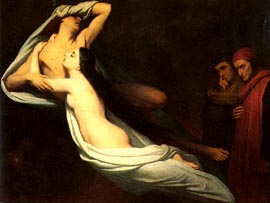
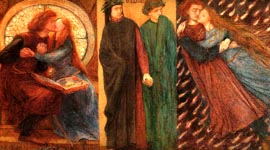
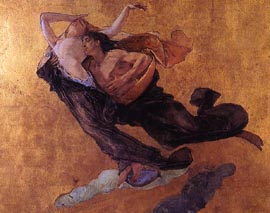
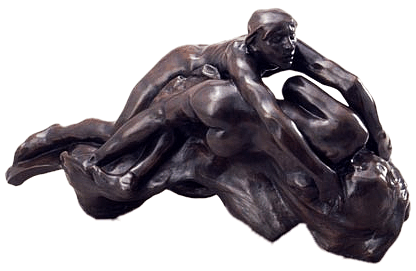 Elsen
made the interesting observation that in this composition, the postures of
the characters do not really fit together; he supposes Rodin in this case
- other than in 'The Kiss' - had simply assembled two disparate figures.
Between Paolo's Pelvis and Francesca's tighs is a lump of inspecified
material, bridging the gap between the partners. Elsen specifies that this
is no textile drapery. Since both are nude, like all sinners in the Inferno, this couldn't be
expected anyway. Elsen's observation leaves us with the question how this
substance should be understood, if not as clothes.
Elsen
made the interesting observation that in this composition, the postures of
the characters do not really fit together; he supposes Rodin in this case
- other than in 'The Kiss' - had simply assembled two disparate figures.
Between Paolo's Pelvis and Francesca's tighs is a lump of inspecified
material, bridging the gap between the partners. Elsen specifies that this
is no textile drapery. Since both are nude, like all sinners in the Inferno, this couldn't be
expected anyway. Elsen's observation leaves us with the question how this
substance should be understood, if not as clothes. 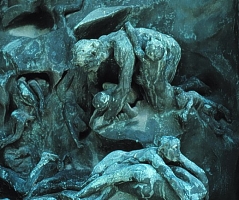
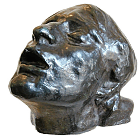 e
distracted from the damned souls and their miserable fate.
e
distracted from the damned souls and their miserable fate.